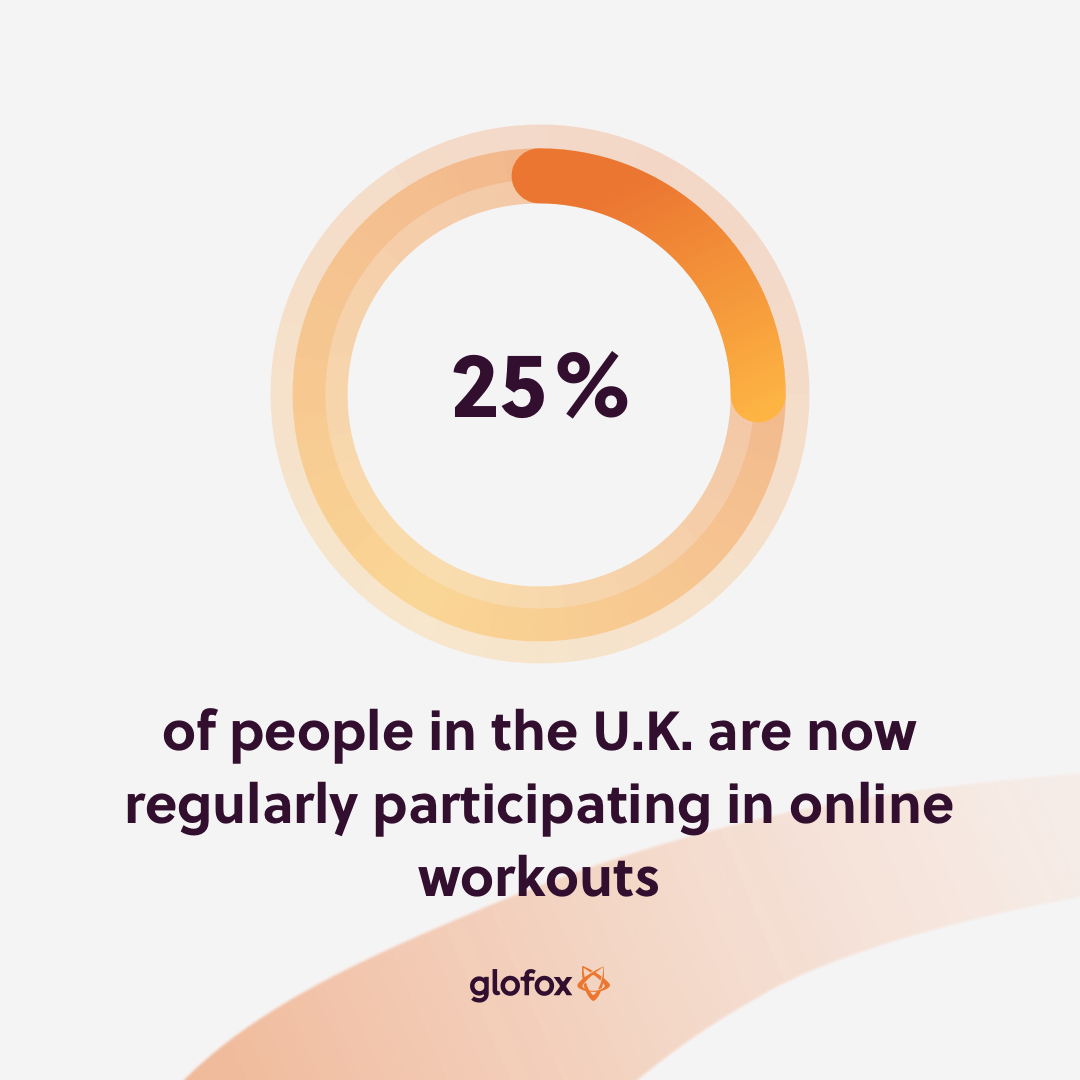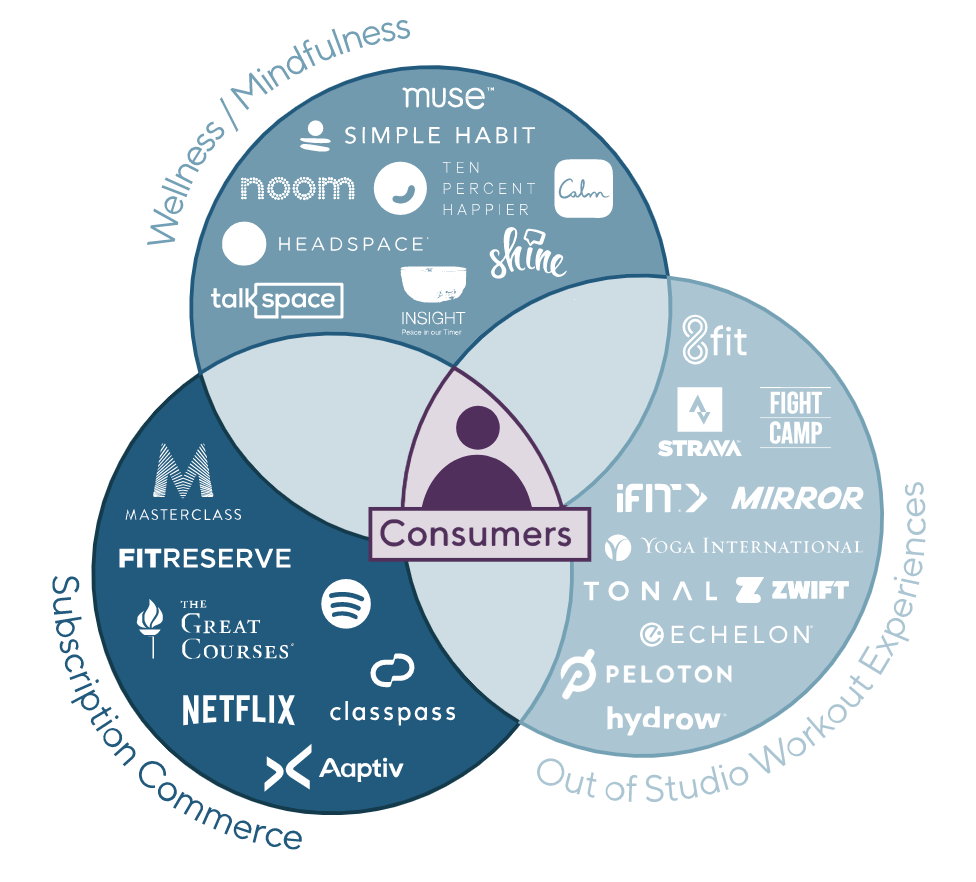Before the pandemic, digital fitness was already a growing market, and many feared that it would replace the physical need for gyms and studios altogether. However, we have always believed that digital fitness is for many consumers, a supplement, something that compliments a gym membership, rather than replaces it. Now, this is even more true for the future of the fitness industry, where we can expect the new “normal” to reflect a combination of both digital and real-life services from gyms and studios.
But it’s not just you and your fitness business that has transformed to survive now. Your members have too. So what behavior can we expect from gym members post-coronavirus, and what does this mean for fitness business owners?
In this article, we’ll look at seven ways consumer habits have shifted, how they will influence the fitness industry, and ways that your business can embrace the changes to meet new expectations. As digital fitness will play a significant role in the future of the industry, we’ll start by looking at the market to understand its trajectory. Skip ahead to:
- Greater Focus on Fitness Tech
- Hesitant to Return to Normality
- A New Appreciation For Home Workouts
- Even Greater Emphasis on Value
- More Aware of the Health Benefits of Fitness
- Greater Appreciation For the Social Aspects of Fitness
- A Broader Definition of Fitness
The Rise of Digital Fitness
Right now, the fitness industry is surviving on a combination of digital fitness products and online classes. And while Coronavirus has certainly meant a surge for the digital fitness market, its popularity has been apparent for some time.
Both wearable technology and digital fitness services have been trending up since as far back as 2014. According to data from payments technology firm Cardlytics, consumer spending behavior has long indicated the market’s growth: In 2014, on-demand fitness services accounted for 4.8% of total workout spend, and by 2016, this statistic had increased to 7.7%. In further reports, wearable technology comes out at number 1 in the ACSM’s 2020 survey of fitness trends and excluding a brief drop to number 3 in 2018; the trend has been at number 1 since 2016.
Growth across the digital fitness market has been accelerated in recent months, but its prevalence has been climbing for years.
Realistically the current digital fitness boom will likely decline as lockdown restrictions ease. But once people begin leaving their homes to return to a normal life, the market’s trajectory will carry on – just as it was before the pandemic. Digital fitness has come a long way and will continue to develop as consumers continue to invest in the trend in its many formats.
7 Ways New Consumer Habits Will Impact the Fitness Industry
Digital fitness has quickly become the savior of the industry as more people grow accustomed to it. But how will this change the way members engage with gyms and studios? In the next section, we’ll look at seven consumer trends that we can expect in the near future.
1. Greater Focus on Fitness Tech
Perhaps tech isn’t something that you have previously incorporated into your classes, but you can be sure that more members will use it in the future. Throughout lockdown, some may have started using fitness apps and wearables to support their at-home workouts better. And once people are used to using wearables, they get into the habit of tracking their efforts and progress, and they like being able to see it.
Encouraging your members to use fitness tech in the future can help you make them accountable. In episode 28 of The Fitness Founders Podcast, we spoke to Alex Hormozi, founder and owner of Gym Launch. During the episode, Alex points out that many workouts are mostly the same, and the differentiator that will give your business the edge over everyone else is keeping members accountable. “What are the competitive advantages that a small business owner has in a local or super local marketplace? It’s accountability, right. It’s service. What we do is not selling Zoom workouts. You have them so that you can fulfill on it.”
While Alex is referring to online workouts in this example, it applies to your in-studio workouts as well. For now, you can keep it simple with before and after pictures, regular fitness assessments, and check-in phone calls. But maybe further down the line, you’ll want to incorporate tech into your gym – think along the lines of the heart-rate monitors used in an Orangetheory class.
Accountability is the key differentiator, and utilizing fitness tech at your studio can help you make sure your members are responsible for their progress.
2. Hesitant to Return to Normality
Across the globe, during the stages of various government exit strategies, gyms and studios could soon be permitted to open – as long they’re adhering to strict social distancing guidelines and cleaning protocols.
While your members have been enjoying your online workouts, many of them will have missed being in the studio. But this doesn’t necessarily mean they’ll be jumping straight back in and picking up where they left off the moment your doors are open.
The truth is that even as businesses open up and social distancing rules are lifted in the coming months until there is a vaccine for COVID-19, people will be cautious.
So it may be a while before your members feel totally comfortable going back to their full studio routine. However, you can still encourage them, help them maintain consistency, and build their confidence. Here are a few things you can do to reassure them:
Keep members updated: communicate regularly when reopening is confirmed and make sure you’re available for any questions that members might have.
Be transparent: by now, you are likely preparing procedures for when you reopen, so tell your members. Send out a detailed run-through of how your studio will be operating and highlight the additional safety measure you’ll be taking.
Offer support: While members may feel hesitant about visiting your studio, make it clear that your online services are still running: you’re still providing the same classes, value, and support that you’ve given them this whole time.
The Customer
Engagement Playbook
for Your Fitness
Business
Discover more 3. A New Appreciation For Home Workouts
Throughout lockdown, online workouts have been providing people with structure, fitness, a sense of community, and socializing. They’ve been keeping people sane. Online workouts are here to stay because consumers will expect a hybrid offering in the future. While long-term, many will return to their usual in-studio routine, a gym that also offers online workouts will be even more accessible to members.
In a recent Men’s Health article, Andrew Mantiet, founder of Turf Games notes that the rise of the home gym is going to be substantial: “People now know they can get a really great workout within the confines of their home and will engage with brands that offer flexible programming around progression, accountability, and support online.”
Now is the time to plan for how you’ll provide a consistent service both in-person and online. When it emerges, the hybrid fitness business model will be completely new, and so the ‘right’ approach will be different for every studio. There’s a lot to consider in this area, but knowing now that your members will have new expectations means there’s plenty of time to plan and deliver.
4. Even Greater Emphasis on Value
Due to the sheer amount of fitness options online now and their competitive pricing, gym members will become more price-conscious. And as gyms and studios prepare to diversify into both online and in-studio workouts in the future, the competition will be high.
People are happy to pay more for a service that addresses their needs and provides value beyond the initial purchase. They won’t necessarily be looking for the cheapest option or the most premium; they’ll be looking for value.
It’s essential to keep in mind that throughout this time, a lot of people will have been taking part in free online classes – whether from the studio they’d usually pay to attend, or the thousands of free accessible videos out there. But just because it’s free doesn’t mean they’ve been getting real value.
When pitching to the gym members of the future, focus on the value your studio offers over price. A free online workout or facilities-access gym membership for $20 a month means people can exercise. A membership with your studio means 1:1 check-ins to keep people on track, guidance from your area of expertise, community, and results. Your service is personalized. Focus on offers that require commitment from you and your members from the get-go, where everyone is guaranteed to gain something:
- Bigger packages for the same price
- Extended and expanded schedules
- 1:1 check-ins, accountability, and results (using customer reviews and testimonials, case studies from people losing weight/getting stronger/more skilled at home.)
5. More Aware of the Health Benefits of Fitness
According to a Savanta ComRes study commissioned by Sport England, 25% of people in the U.K. are now regularly participating in online workouts. This statistic exceeds the U.K.’s gym membership level, which according to the most recent State of the U.K. Fitness Industry Report from LDB, stands at 15.6%. A regional study from Core Research also reveals high numbers of exercise participation in Ireland, with 69% of the population doing the same amount or more during the lockdown.
As we’ve mentioned, online workouts have been providing people with not only fitness, but structure, a sense of community, and socializing. Plus, online workouts aside, running has also been enjoying a boom because of Coronavirus.
In these challenging times, working out has become a significant source of relief for people – whether they’ve always enjoyed exercising, or are entirely new to it. Going to a gym for the first time is often intimidating for some people. Still, online workouts have removed this common barrier to entry: working out is much less intimidating when you’re doing it from the comfort of your living room.
It’s given many a whole new appreciation for exercise, and they’ll be embracing it both now and in the future. And when your doors are open again, your online classes are a great way to introduce new people to your gym culture and community in a way that’s less intimidating than coming into the studio.
6. Greater Appreciation For the Social Aspects of Fitness
Before the pandemic, the fitness industry was thriving, especially in the boutique sector. The member experience that comes along with boutique incorporates working out, socializing, and a sense of community. It’s training in a small group setting with everyone feeling accomplished and ‘in it together’ throughout.
This sense of community is mirrored in what we’ve seen amid the transition to online fitness, and it’s kept many gym members loyal to their respective studios at this time. And after many months of isolation – it’s also one of the main aspects they’ll look forward to experiencing in real life.
Until that day comes, focus on emphasizing the social side of your (virtual) studio now, and get creative with ideas that you can pull together in person in the future. Classes aside, bring your community together for virtual events, something light that gives everyone a chance to socialize, like a quiz or ‘fitness bingo’ evening. If you’re hosting a quiz, give members the option to invite the people in their household to join in too, it’s an excellent opportunity for everyone to get to know each other better.
7. A Broader Definition of Fitness
There’s been a significant shift in recent years to society’s view of health and fitness overall. Fitness and wellness are now more holistic; it’s a lifestyle choice, rather than a couple of hours a week you feel you have to commit to. It combines various aspects of wellness, including nutrition, mental health, and of course, physical activity.
As wellness is stressed as a priority during this difficult time, the broader definition of ‘fitness’ has grown to include not just overall wellness, but also on-demand services. In a recent study on trends in digital fitness from Lincoln International, it’s noted that consumers are increasingly consuming on-demand services and subscription models, like Netflix and Spotify. Fitness businesses now recognize that a digital offering can enhance and supplement their studio experience in the future – not replace it.
In essence, consumers will have certain expectations around being able to easily and conveniently take part in different aspects of fitness. For your fitness business, this means maintaining an excellent online offering for members in the future.
In Summary
The world as we know it has had to adapt to continue functioning amid the pandemic, and it’s inevitable that people’s behavior has changed along with it.
This shift will influence the way you communicate and engage with members, as well as the services you offer. But as long as you can keep up with the trends (and stay a step ahead!), your studio will always be able to anticipate, meet, and exceed the needs of its members.

















